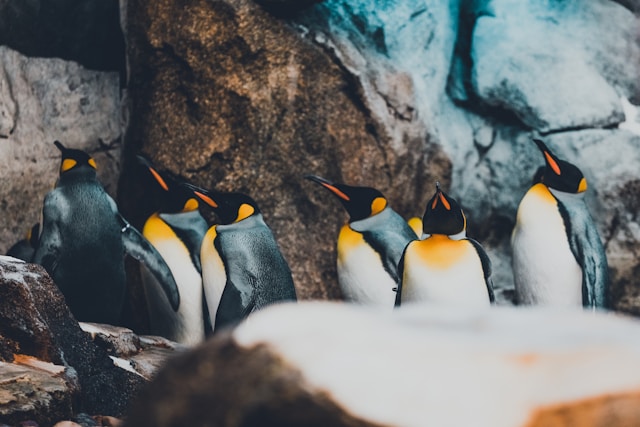A drifting iceberg threatened the survival of emperor penguin chicks at the Halley Bay colony, but recent satellite imagery shows that the colony has survived despite significant challenges
In a remarkable turn of events, a colony of emperor penguin chicks at Halley Bay, Antarctica, has survived after being cut off from the sea by a massive iceberg, dubbed “maybe the world’s unluckiest penguins.” In May, a colossal iceberg measuring 380 square kilometres—roughly the size of the Isle of Wight—calved off from the Brunt Ice Shelf and drifted to block the penguins’ access to vital hunting grounds.
As mothers left their chicks to hunt for food, the iceberg’s presence raised concerns about the chicks’ survival. With the sun not rising over Antarctica during the winter months, scientists anxiously awaited satellite images to confirm the status of the colony. Recent images from the Sentinel-1 satellites revealed a “brown smudge” against the white ice, indicating that the penguins were still alive.
The Survival Mystery
How the penguins managed to endure this challenge remains a mystery. The iceberg, towering approximately 15 meters (49 feet) above the ice, likely extends much deeper below the surface. Experts speculate that the penguins may have found a small crack in the ice, allowing them to dive under the iceberg to access the sea.
A History of Hardships
The Halley Bay colony, once home to 14,000 to 25,000 breeding pairs, has faced numerous challenges in recent years. In 2019, a catastrophic breeding failure resulted in the colony raising no chicks for three consecutive years, primarily due to climate change causing sea ice instability. As sea ice diminished, many chicks drowned when unable to access safe ice.
In a bid for survival, several hundred penguins migrated to the MacDonald Ice rumples, but their future remained uncertain until the recent iceberg incident.
Future Threats
Although the news of survival is uplifting, the challenges for the Halley Bay colony are far from over. As the iceberg shifts, it alters the ice topography, exposing the breeding site to more vulnerabilities. Recent satellite data shows that the sea ice close to the colony is beginning to break up, posing a significant threat to the chicks, who will not be able to swim until they mature around December.
If the ice continues to deteriorate before the chicks can swim, their chances of survival will plummet. The ongoing effects of climate change are making life increasingly precarious for the emperor penguins, whose habitat is rapidly transforming.
Conclusion
The story of the Halley Bay emperor penguin colony exemplifies the resilience of these remarkable birds in the face of adversity. However, it also highlights the urgent need for action against climate change to preserve their habitat and ensure their survival for future generations.
